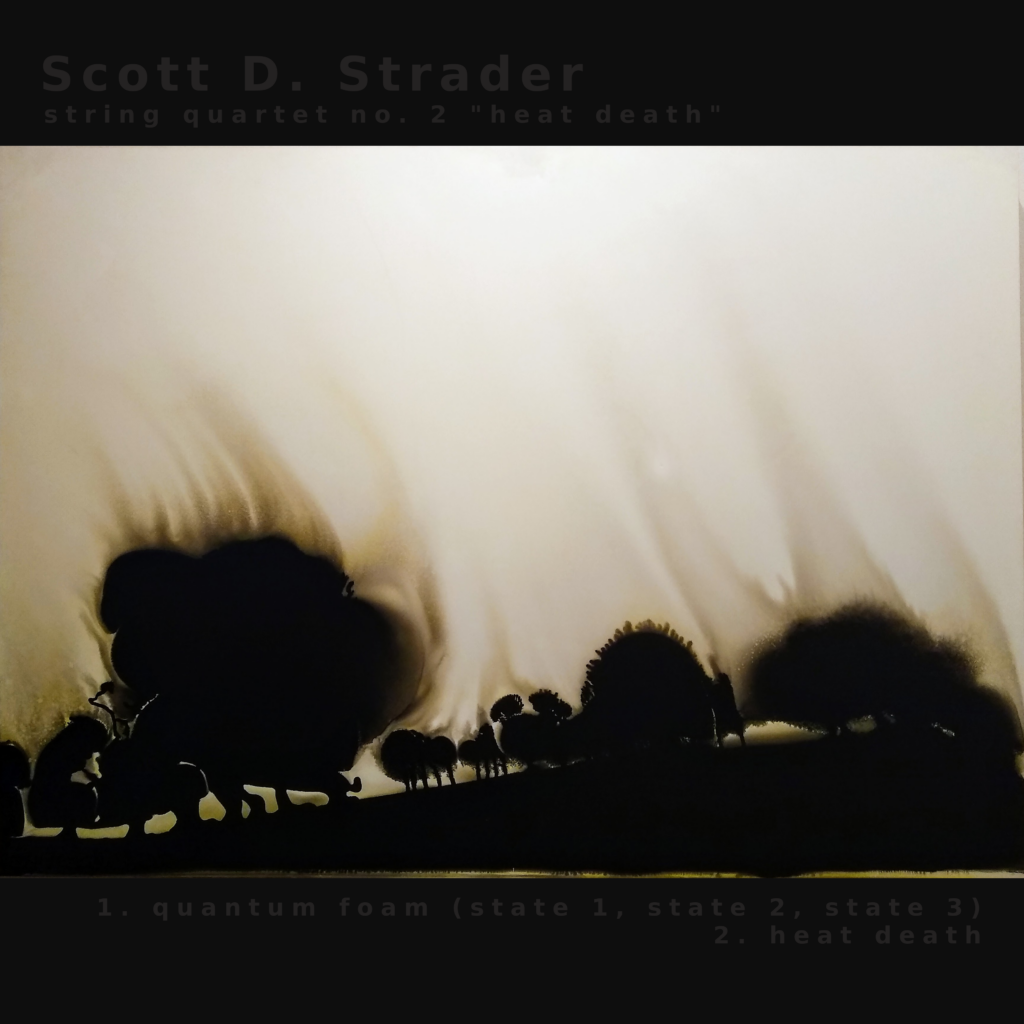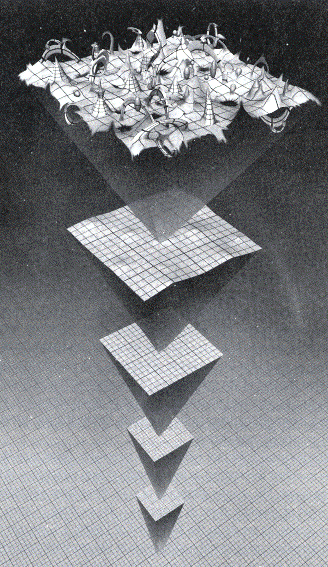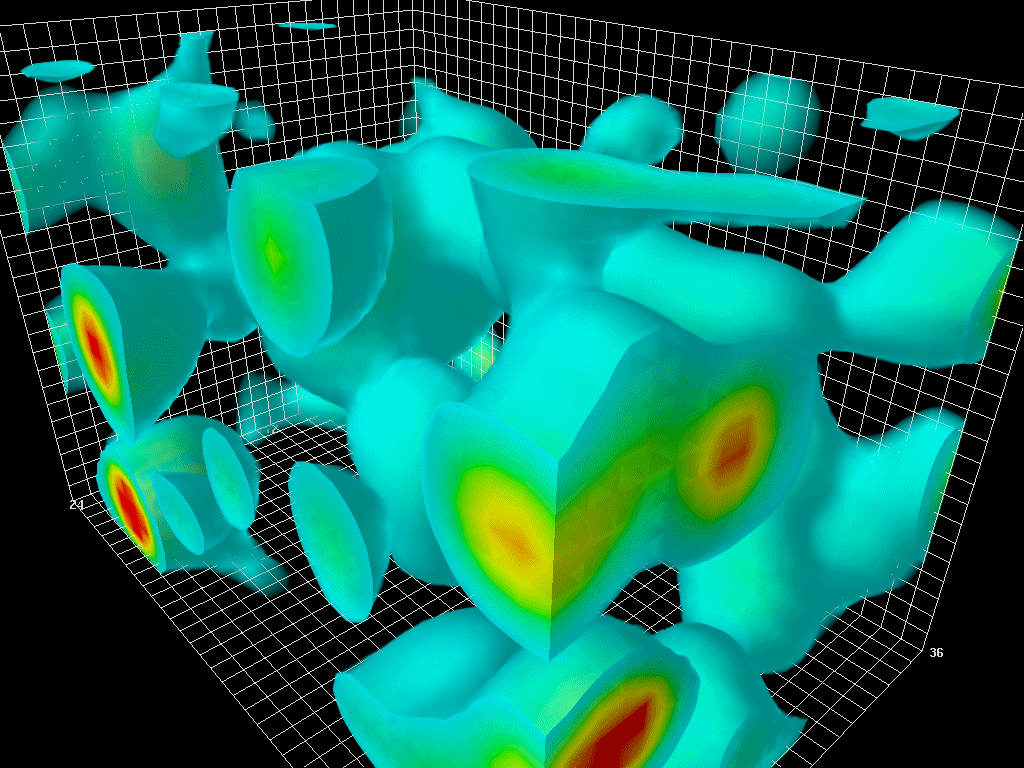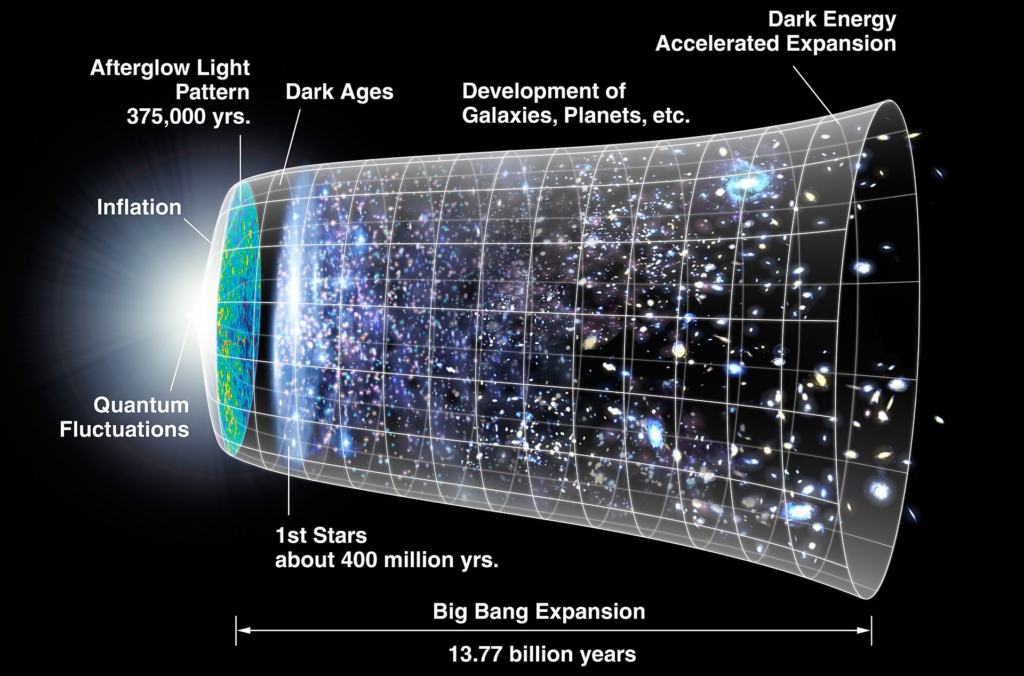
- quantum foam (state 1, state 2, state 3)
- heat death
There’s a novel by Peter Watts called The Freeze-Frame Revolution that centers around a variation on a “generation ship” where the crew lives in stasis for intervals of 10s and 100s of thousands of years (iirc) and are brought out for only a few months when maintenance or scientific research is needed (contrasting the “generations” of progeny in a standard generation ship). The story proper involves a complicated mutiny against the ship’s AI, but a throwaway quote from one of the crew stayed with me. When discussing their ultimate future with another member, the first confessed that he hoped to be alive for the heat death of the universe.
The first movement, Quantum foam, is broken into three sections of equal duration. Each represents timespace at the same period of time but viewed through different conceptual “states”. The second movement, Heat death, takes us from a heat-full universe to its death. Musically it opens with a short tonal foam introduction. The bulk of the movement is a series of canons on the unison but with fluctuations of note durations across voices. It ends with vertical lines devolving into horizontal and finally to a tone cluster of six notes a semi-tone apart, echoing the clusters that open the first movement.
Quantum foam defines the sub-atomic, quantum level creation and destruction of particles that happens constantly over very short periods of time. Similarly, quantum fluctuations are the changes in energy at the quantum level. There is also a component of these ideas that suggests even the structure of space is rapidly mutating.
Shorthand illustrations for these concepts are more helpful:


Heat death describes a time when matter and energy will be distributed evenly throughout the universe such that work can no longer be performed; there is no potential energy. Think of it as matter slowly being distributed until it is spread evenly. Stars and even black holes no longer exist to give off energy. The time scale is 10106 years before this equilibrium is achieved.
The Big Bang expansion when extrapolated across such a time scale helps to illustrate this dissipation of matter and energy:

All of this is theoretical and disputed by some, and my descriptions above are likely imprecise-but-close-enough.
(written from 23 Feb 2022–5 May 2022)